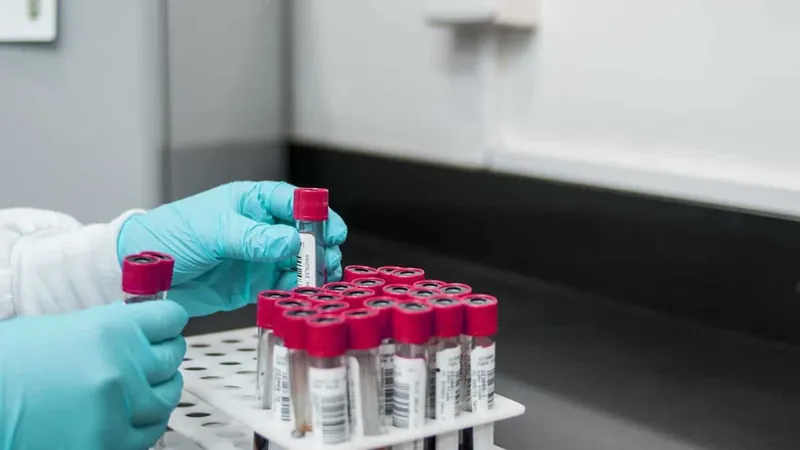
Astonishing Discovery: Living Microbes Unearthed in 2-Billion-Year-Old Rock!
2024-10-04
Author: Wei
Astonishing Discovery: Living Microbes Unearthed in 2-Billion-Year-Old Rock!
In an unprecedented finding, scientists have discovered living microbes trapped within a sealed fracture of rock that dates back an astonishing 2 billion years. This ancient specimen was extracted from the Bushveld Igneous Complex in South Africa, a region renowned for its rich mineral deposits, including a staggering 70% of the world's mined platinum. This groundbreaking discovery marks the oldest recorded evidence of living microorganisms inside ancient rock, pushing the boundaries of our understanding of life and its resilience against time.
Research Methodology
The research team, led by Yohey Suzuki, an associate professor from the Graduate School of Science at the University of Tokyo, built upon previous studies to develop a multi-faceted imaging technique utilizing infrared spectroscopy, electron microscopy, and fluorescent microscopy. This meticulous approach ensured that the microbial life found in the rock sample was indeed indigenous and not a result of contamination during the retrieval process.
Impact of Findings
"We previously believed that living organisms couldn't survive in 2-billion-year-old rocks; the previous record was 100 million years old," Suzuki stated. "This discovery holds immense potential for unraveling the mysteries of early life on Earth."
Geological Context
The rocks from the Bushveld Igneous Complex formed millions of years ago when magma cooled deep beneath the Earth's surface, creating a stable environment that allowed microbial life to persist until today. The BIC spans roughly 66,000 square kilometers—an area comparable to Ireland—and maintains a remarkable thickness of up to 9 kilometers with minimal deformation, serving as a natural time capsule for these resilient microorganisms.
Sampling and Analysis
Thanks to the International Continental Scientific Drilling Program, the team secured a 30-centimeter-long core sample from approximately 15 meters underground. Upon slicing and analyzing the specimen, researchers found densely packed living microbial cells in the rock's cracks, with clay obstructing any pathways for outside contamination or movement.
Extraterrestrial Implications
With the growing interest in extraterrestrial life, Suzuki expressed excitement over the potential parallels between these ancient Earth microbes and those that could exist on Mars. NASA's Perseverance rover is expected to return rock samples that are similarly aged, igniting hopes for future discoveries. "Finding microbial life in 2-billion-year-old Earth samples and verifying their authenticity heightens our anticipation for what we might uncover on Mars," he noted.
Conclusion
As scientists continue to delve into the realms of ancient life and extraterrestrial exploration, this remarkable discovery serves as a beacon of hope, illustrating that life can endure even in the most extreme and forgotten environments. The implications are tremendous—not only could it redefine our understanding of life on Earth, but it could also open up new possibilities in the search for life on distant planets.
Stay tuned as we unravel further mysteries hidden within the Earth's layers and beyond!



 Brasil (PT)
Brasil (PT)
 Canada (EN)
Canada (EN)
 Chile (ES)
Chile (ES)
 España (ES)
España (ES)
 France (FR)
France (FR)
 Hong Kong (EN)
Hong Kong (EN)
 Italia (IT)
Italia (IT)
 日本 (JA)
日本 (JA)
 Magyarország (HU)
Magyarország (HU)
 Norge (NO)
Norge (NO)
 Polska (PL)
Polska (PL)
 Schweiz (DE)
Schweiz (DE)
 Singapore (EN)
Singapore (EN)
 Sverige (SV)
Sverige (SV)
 Suomi (FI)
Suomi (FI)
 Türkiye (TR)
Türkiye (TR)